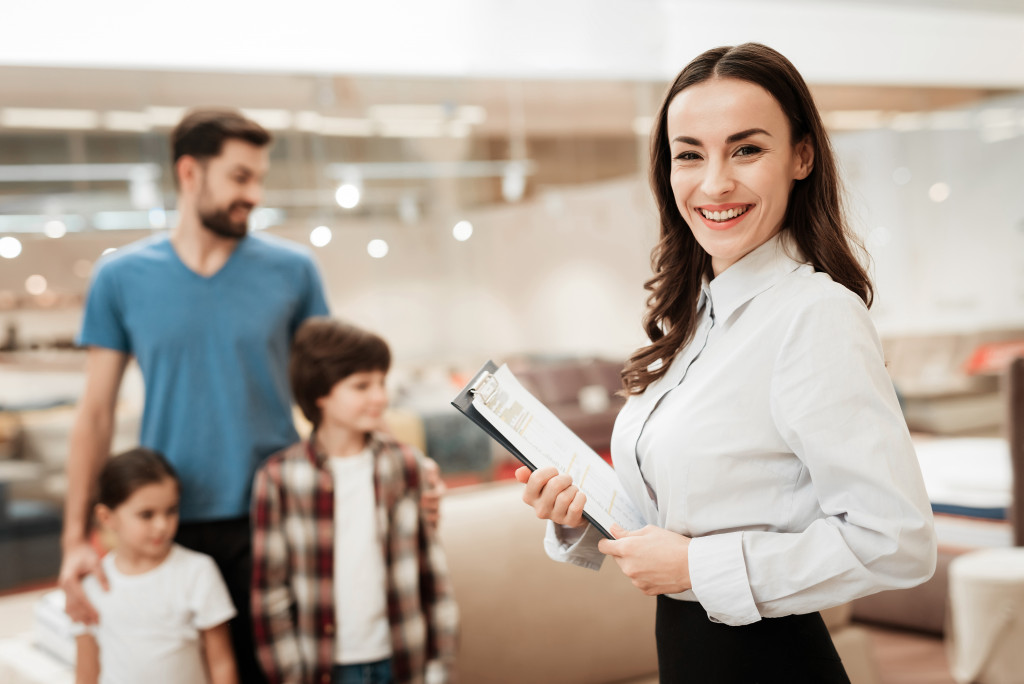Anything you see from the store’s entrance to exit, it’s all studied. From product placement, lighting to the size of trolleys available, nothing’s amiss. It’s all about alluring customers up to the back, holding them inside the store longer, and tempting them to purchase more.
If you’re wondering how to open your own grocery store, make sure you know what makes your customers tick. Many retail shops reap success by tapping on the psychology of buying. True enough, consumers almost always fall for merchandising techniques.
Three Main Rules in Visual Merchandising
In visual merchandising, there are three major rules—place products to be seen, make them easily accessible and tangible, then offer consumers good choices, all of which respond to customers’ preferences.
Customers don’t buy the products they don’t see, tend to touch and peruse products first before they buy them, and finally, want good enough choices—not more, not less.
Setting the foundation of your merchandising techniques on these, you can then venture to the many surefire ways every successful grocery store uses. Take care of your grocery’s floor plan, lighting, product placement, and other aspects.
Merchandising Strategies That Always Work in Retail Stores
Everything from product placement to color scheme serves its unique purpose—to improve customer experience, iterate your brand, and increase your sales. Here are some visual merchandising strategies that many grocery stores apply:
Use Smart Merchandise Groupings
There are three ways you can group your products—bundled, complementary, and prop. With bundled grouping, you present the merchandise in one category but with different purposes—for instance, furniture. Rather than put all the desks, couches, and tables in one room, each of them is picked and grouped in one bundle. The result, say, would be an ideal living room with all-matching furniture.
Complementary grouping is somehow similar to bundle grouping as it also puts varied products in a group. Products are displayed in an adjacent arrangement that helps customers remember to buy what they’re missing out on.
For example, when customers buy a birthday wrapping paper, seeing the birthday cards on a nearby shelf, they will most likely buy one from the latter. The same way in the painting aisle—buying some paint, customers remember they want new paintbrushes, too, so they buy one.
Lastly, prop grouping is all about props, mostly mannequins, for clothing stores. Customers will almost always stop by to look at them, serving as a beacon despite the high traffic or plenty of other choices.
But mannequins aren’t the only commonly used props that work. Take, for example, wine stores that usually display barrels for their products. For sunscreen or suntan products, stores pick inflatable palm trees for props. These and other forms of props can really drive customers to peruse certain products in that area.
Use Focal Points
Speaking of props, when you want to highlight specific products, use some forms of props. Depending on the merchandise, they can be anything—from mannequins to artwork—as long as they engage and do not distract the customers.
Focal points may take space, usually the aesthetic or unshoppable areas, and aim to improve customers’ shopping experience while ensuring they’re helpful and match your branding and merchandising well.
Guide Customers Through Your Store Layout
The goal is to keep the customers longer within the store; the more they linger, the more they buy. Many customers gravitate toward the right side upon entering the store, the side that has the power to lure customers in. This is where the need for a power wall comes in. A power wall immediately displays what the store is about—its purpose and brand.
This wall can have a significant impact on consumers. Once they find the power wall uninteresting, they usually don’t continue to enter. Retail stores with food products primarily display fresh produce, just like bakeries that can trigger hunger. This makes customers shop not with their heads but stomachs.
Then, display the top essentials at the back so that customers would have to travel all the way to the back and come across the other products. Entice them further at the back with featured products or big specials to make them stay longer inside the store.
Put long mats on the floor and play some slow music to encourage the consumers to stay longer in the shop.
Be Kid-friendly

When parents bring their kids to the store, kids will also look around. Most grocery shops display kiddie treats on the shelves below, on kids’ eye level, for a temptation. With screaming or whining, parents will have to buy those treats their kids covet for.
Sell More With the Right Merchandising Strategies
New or old in the grocery business, learn from those that made it successfully. Making customers stay longer in the store so that they buy more is one trick that never gets old.


